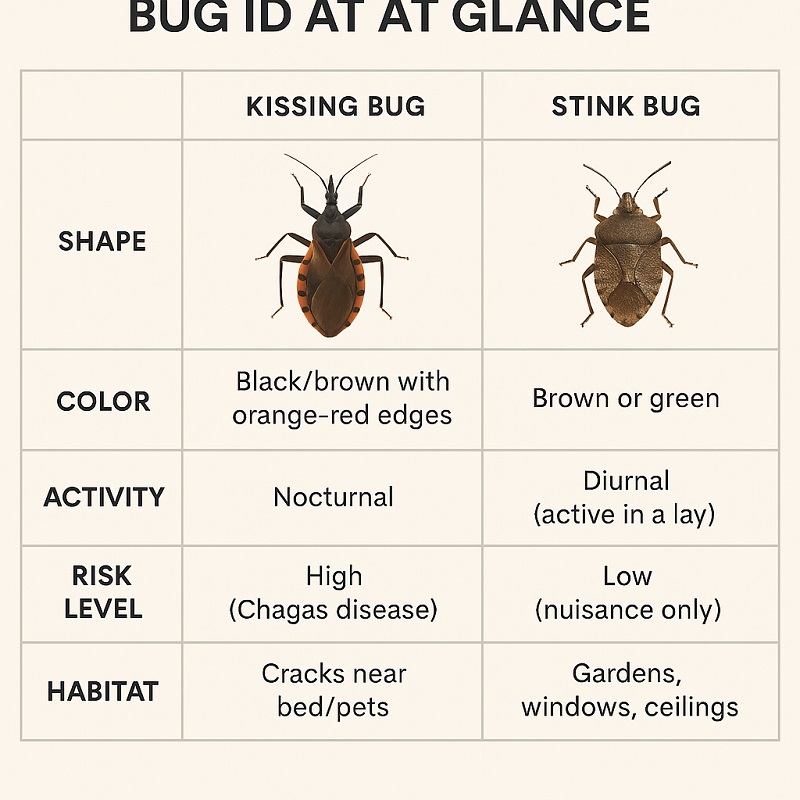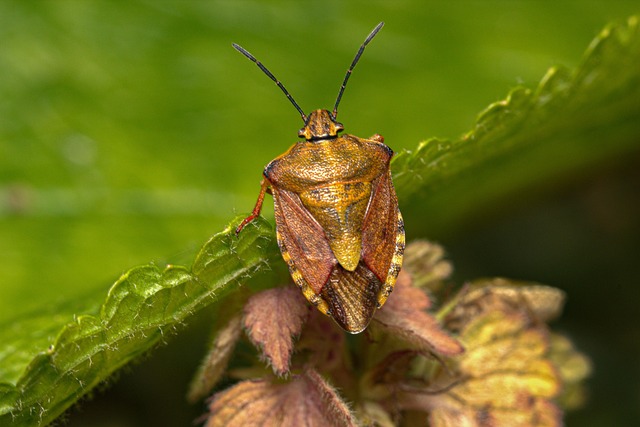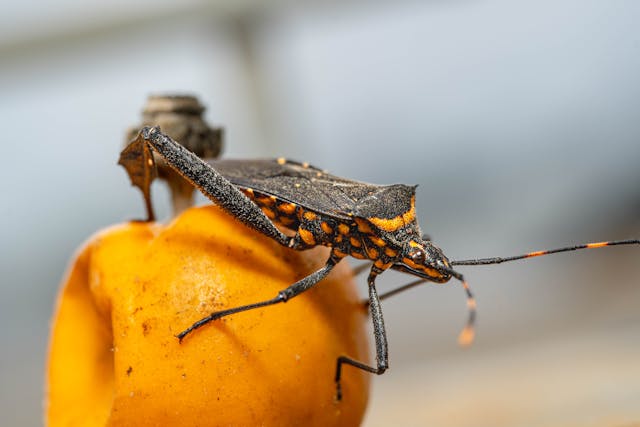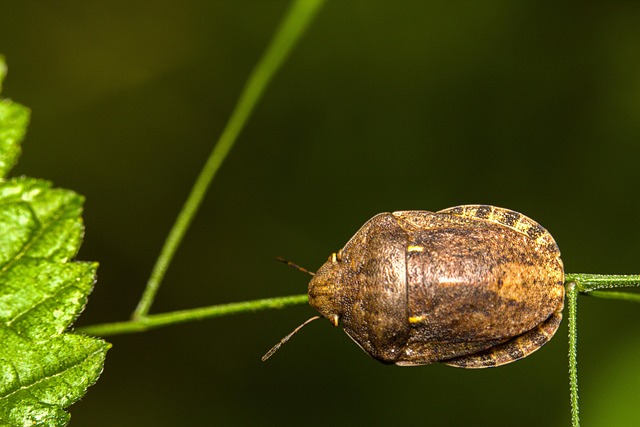✅ Quick Answer: Kissing Bug vs Stink Bug – Know the Danger
While both kissing bugs and stink bugs can be found inside homes, only one poses a serious health risk. Stink bugs are primarily plant pests and produce a bad smell when disturbed—but they don’t bite or transmit disease. Kissing bugs, on the other hand, can bite humans and animals and are known carriers of Chagas disease, a potentially life-threatening illness. If you suspect a kissing bug in your home, it’s best to act quickly and with caution.
Kissing Bug vs Stink Bug – Fast Facts
✅ Kissing Bug Bites? Yes
✅ Transmits Disease? Yes – Chagas
✅ Active at Night? Yes
✅ Smelly? No
✅ Common in Homes? Sometimes (esp. South)
✅ Stink Bug Bites? No
✅ Disease Risk? None
✅ Active in Day? Yes
✅ Emits Odor? Yes
✅ Common in Homes? Yes (fall/winter)
Why This Comparison Matters
You might’ve seen a strange bug crawling on your wall or hanging out near your bed and thought, “Is it a stink bug or something worse?” With more kissing bug sightings reported across the southern U.S., it’s easy to confuse these two very different insects. Understanding the differences could literally save you or your pet from a dangerous disease.
So, let’s clear the air—and the stink. Here’s how to spot the difference and know which bug you should be worried about.

Bug ID 101: What Do They Look Like?
Kissing Bug Appearance
- Size: 0.5 to 1 inch long
- Body: Long and flat, dark brown or black
- Distinctive red or orange markings on the side of the abdomen
- Cone-shaped head with a thin, extended mouthpart (proboscis)
- Looks similar to assassin bugs
Stink Bug Appearance
- Size: About 0.5 to 0.75 inch
- Body: Shield-shaped, often brown or green
- Sturdy, compact legs
- Emits a strong odor when threatened
- Wings lie flat over their back in an “X” pattern
Tip: If you’re unsure, look for the cone-shaped head and narrow body of the kissing bug. That’s your first clue.

Where You’ll Find Them
Kissing Bugs
- Found in the southern U.S. including Texas, Arizona, New Mexico, and Florida
- Hide in cracks in walls, baseboards, under mattresses, near pet beds
- Most active at night—especially near sleeping humans or animals
Stink Bugs
- Common across the entire U.S., especially in the Northeast and Midwest
- Attracted to warmth in the fall, often found on windowsills or walls
- Hide in attics, vents, and behind curtains
- Prefer plants and gardens during spring/summer
Red flag: A bug near your bed or on your pillow at night? Don’t dismiss it as a stink bug without checking closely.
Behavior and Feeding Habits
Kissing Bug
- Nocturnal
- Feeds on blood of humans and animals
- Bites usually occur near the mouth or eyes while the person sleeps
- Can defecate after feeding—if feces enters the bite or mucous membrane, Chagas disease can be transmitted

Stink Bug
- Herbivore – feeds on fruits, vegetables, and ornamental plants
- Does not bite or feed on humans or pets
- Releases a foul-smelling chemical as a defense mechanism
Bottom line: One stinks. The other sucks blood and can cause long-term illness.
⚠️ Health Risks: One Is Dangerous
| Feature | Kissing Bug | Stink Bug |
| Bites | Yes | No |
| Blood Feeder | Yes | No |
| Disease Risk | High (Chagas Disease) | None |
| Harmful to Pets | Yes | No |
| Harmful to Humans | Yes | No |
Kissing Bug Bites & Chagas Disease: The Silent Health Threat You Can’t Ignore
When it comes to kissing bugs, the danger isn’t just the bite—it’s what happens afterward. These seemingly harmless insects are capable of transmitting a potentially deadly parasitic infection called Chagas disease, and it’s more common in the U.S. than most people realize.
How the Disease Spreads
Kissing bugs feed on blood—usually at night, when their human or animal host is asleep. Their preferred bite zone? Around the mouth, eyes, or nose, earning them their unsettling nickname.
But the real problem starts after the bite. These bugs often defecate near the bite wound, and the feces can carry a parasite called Trypanosoma cruzi. When someone unknowingly rubs or scratches the bite site, the parasite can enter the body through:
- The bite wound
- Mucous membranes (eyes, mouth)
- Cuts or abrasions on the skin
Once inside the body, the parasite begins to multiply—silently.
What Is Chagas Disease?
Chagas disease is a neglected tropical disease that progresses in two stages:
- Acute Phase (First 1–2 months):
- Often goes unnoticed or appears like the flu
- Symptoms may include:
- Fever
- Fatigue
- Body aches
- Rash
- Swelling at the bite site
- Swollen eyelid (Romaña’s sign)
- Chronic Phase (Lasts for decades):
- Most people have no symptoms for years
- Up to 30% develop chronic Chagas disease, which can lead to:
- Serious heart issues (arrhythmias, heart failure)
- Digestive complications
- Sudden death from cardiac arrest
Chagas Disease in the U.S.
- 300,000+ people in the U.S. may already be infected
- Reported in over 28 states, primarily in the South
- Most U.S. cases are undiagnosed until advanced symptoms appear

What About Pets?
Yes—dogs and cats can get Chagas disease too. Pets that sleep outdoors or in garages are especially at risk.
Common symptoms in pets:
- Weakness or fatigue
- Irregular heartbeat
- Sudden collapse or death (in advanced cases)
⚕️ What to Do If You’re Bitten
- Wash the area with soap and water
- Avoid touching your eyes or mouth
- Capture the bug, if possible
- Seek medical attention if you live in an affected area
- Ask your doctor about Chagas testing
️ Early Detection Saves Lives
Chagas is treatable—especially in the acute phase—with antiparasitic medications like benznidazole and nifurtimox. However, there is no vaccine, and treatment becomes more complex once the chronic phase begins.
Prevention is your best protection.
Stink Bug Health Risks
- Does not transmit disease
- Odor can trigger allergies in sensitive individuals
- Harmless in terms of bites or illness
According to the CDC, about 300,000 people in the U.S. are living with Chagas disease—many unaware of it.
What to Do If You Find One
Found a Kissing Bug?
- Do not squish it. Capture it in a sealed container
- Wash your hands
- Contact your local health department
- Clean the surrounding area thoroughly
- Inspect pets’ sleeping areas
Found a Stink Bug?
- Don’t crush it. The smell is tough to remove
- Vacuum or gently trap in tissue
- Check window frames, vents, and light fixtures
- Seal entry points to prevent recurrence
️ Prevention Tips for Both Bugs
- Seal all cracks and crevices
- Install door sweeps and window screens
- Keep beds away from walls
- Use yellow outdoor lights (less attractive to bugs)
- Check pet bedding and outdoor kennels frequently
- Trim vegetation near your home’s foundation
Tip: Avoid placing sleeping bags or beds directly on the floor when camping or traveling in the southern U.S.
Common Myths and Misidentifications
- ❌ Myth: Kissing bugs don’t exist in the U.S. → False. They’re confirmed in 28+ states
- ❌ Myth: Stink bugs bite → They don’t
- ❌ Myth: Only dirty homes attract kissing bugs → They can invade clean homes too, especially in warm regions
U.S. Regional Watchlist: Who’s Most at Risk?
Kissing Bug Hotspots:
- Texas
- Arizona
- New Mexico
- Florida
- California (Southern regions)
Stink Bug Hotspots:
- Pennsylvania
- Ohio
- Virginia
- Illinois
- New Jersey
❓ FAQs
Q1: Are kissing bugs and stink bugs related?
A: No. They belong to different insect families and serve different roles in nature.
Q2: Do stink bugs bite?
A: No. They’re harmless and mainly damage plants.
Q3: How do I know if a bite is from a kissing bug?
A: Look for swelling near the eyes or mouth, especially if you wake up with it.
Q4: Can pets get Chagas disease?
A: Yes. Dogs and cats are susceptible, especially in high-risk regions.
Q5: What should I do with a kissing bug?
A: Capture it, don’t crush it, and report it to health authorities.
Conclusion: So, Which One Should You Be Worried About?
When comparing kissing bug vs stink bug, it’s clear:
- Stink bugs are annoying, smelly plant pests—not a threat to you or your pets.
- Kissing bugs are stealthy nighttime feeders that can transmit a serious, sometimes fatal disease.
If you live in a warm climate, especially in the southern U.S., it’s crucial to know the difference—and take action fast. Awareness and prevention could protect your household from a silent, deadly visitor.







